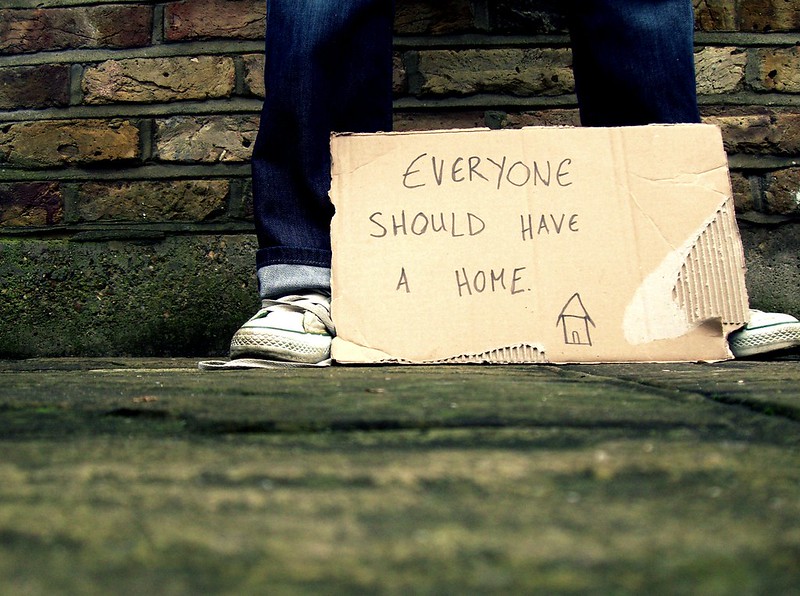We were genuinely heartened when it was revealed in June that Angela Rayner planned to create a new Ending Homelessness Unit if Labour won the General Election.
Labour has a proud record on this issue with previous administrations more than halving the number of households living in temporary accommodation between 2005 and 2010.
This achievement was even sustained during and after the 2008 global financial crisis, with Labour reducing the number of homeless households living in temporary accommodation by almost a quarter (24%) during the recession.
Similarly, between 1999 and 2001, rough sleeping was reduced by two-thirds, reaching an all-time low in 2010.
Over the past couple of years, the soaring numbers of homeless children and households living in temporary accommodation represents a humanitarian crisis unfolding behind closed doors.
Creating a new Ending Homelessness Unit and placing it inside the Deputy Prime Minister’s office means there will be a real focus on tacking this humanitarian crisis at the heart of government. It also provides the new Homelessness Minister, Rushanara Ali with support from the very top of government.
However, reducing the number of households in temporary accommodation will be an even tougher challenge this time around for the following reasons:
Firstly, in Q1 of 2024 the number of homeless children reached more than 151,000. This is already 16% higher than the number of homeless children during the previous peak in 2006, and continues to rise at record rates.
Secondly, the shortage of social housing has grown much more acute over the past 30 years.
In 1979, local authorities and housing associations managed 5.5 million homes at a time when the population of England was less than 47 million people.
As of March 2023 House of Commons researchers estimated there were around 3.8 million social homes in England at a time when the population of the country has grown by around 14m people to almost 61m people.
This means we have less social housing for people to move into leaving them stuck in temporary accommodation and hostels even when they are ready to move on.
Thirdly, the public finances have worsened and the resources currently available to the sector to tackle homelessness have been depleted.
However, we know what needs to be done to end rough sleeping and homelessness for people.
We can dramatically cut the number of people sleeping rough if targets are set and organisations are given the resources to achieve them.
These are three of the key steps the new government should take to halve homelessness again:
Ring-fenced funding
While public finances are tight, the new government must take an ‘invest to save’ approach if we are to reduce homelessness.
In the last financial year, government figures revealed that councils spent an eye-watering £2.3bn on temporary accommodation.
Over the past year, we have seen cash-strapped councils reduce funding for homelessness services at a time when homelessness is rising at record levels.
These specialist services are essential in ending the cycle of homelessness for thousands of people every year – and moving them on into general needs housing.
We understand why individual councils feel a need to cut homelessness services, as they weigh up the closure of one service against the closure of another.
However, it is important for government to understand that under-resourced councils closing homelessness services to balance their annual budget is a false economy.
Closing homelessness services means councils and ultimately taxpayers are forced to spend even greater sums of money on temporary accommodation, and it also means people affected by homelessness have worse outcomes and are trapped in homelessness for longer.
To end this vicious cycle, the government must provide ring-fenced funding for homelessness services to prevent cash-strapped councils from ending funding at a time when these services are needed the most.
We are calling on the new Government to ring-fence and increase long-term revenue funding for supported housing to ensure spending at least matches the £1.6bn per year allocated to local authorities under the last Labour government Supporting People programme in 2010.
Social housing targets
As well as the target for building 1.5m homes over the course of this Parliament we believe an annual target should be set for the delivery of new social homes.
By announcing a target publicly, the government creates pressure on the system to deliver the goal and a target it needs to reach consistently each year.
However, building new homes takes time.
Better use of existing housing stock
Riverside manage more than 75,000 homes as well as homelessness services across more than 160 local authority areas in England.
Insight from this experience leads us to think there is also an opportunity for central government and councils to unlock savings by making better use of existing housing stock.
Since 2019 Riverside has been running Sefton Families Service on behalf of Sefton Council, a service which helps break the cycle of homelessness for families placed in temporary accommodation.
The service sees residents live in a fully-furnished home on a 12-month trial period with intensive support provided by a Riverside support worker rather than in temporary accommodation.
The scheme currently has a 97% success rate with every participant transferring to a long-term social housing tenancy with Riverside. Indeed, the only exception was a family who wanted to move to a permanent home outside of Sefton.
Sefton Families Service has enabled 60families to break the cycle of homelessness, including one family who had previously had to move home 37 times.
As well as making a huge difference to the lives of the families it has supported, the service is estimated to have saved the council £1.6m over four yearscompared to the cost of temporary accommodation, which is over six times as expensive as Riverside’s service.
While there is a mountain to climb, by taking an ‘invest to save’ approach, we believe that this new Labour government can halve homelessness again.
And we know the whole homelessness sector wants to work with government to help them achieve this.
